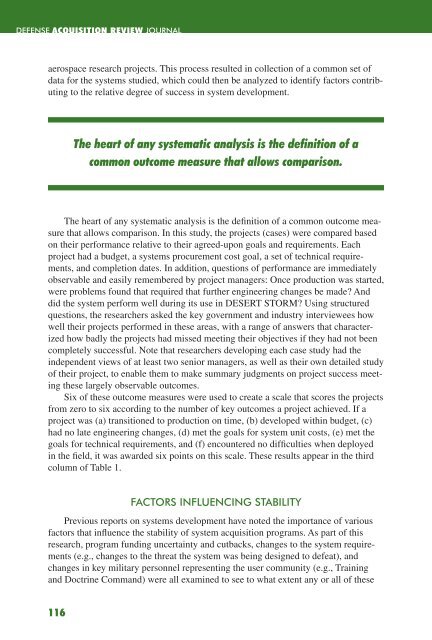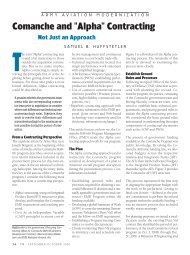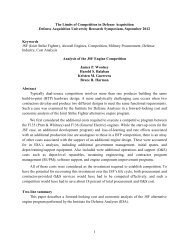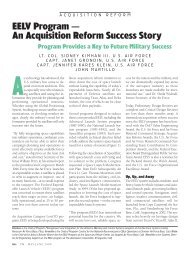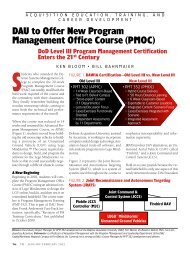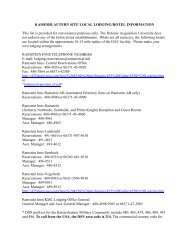Defense ARJ - Defense Acquisition University
Defense ARJ - Defense Acquisition University
Defense ARJ - Defense Acquisition University
You also want an ePaper? Increase the reach of your titles
YUMPU automatically turns print PDFs into web optimized ePapers that Google loves.
<strong>Defense</strong> <strong>Acquisition</strong> Review Journal<br />
aerospace research projects. This process resulted in collection of a common set of<br />
data for the systems studied, which could then be analyzed to identify factors contributing<br />
to the relative degree of success in system development.<br />
The heart of any systematic analysis is the definition of a common outcome measure<br />
that allows comparison. In this study, the projects (cases) were compared based<br />
on their performance relative to their agreed-upon goals and requirements. Each<br />
project had a budget, a systems procurement cost goal, a set of technical requirements,<br />
and completion dates. In addition, questions of performance are immediately<br />
observable and easily remembered by project managers: Once production was started,<br />
were problems found that required that further engineering changes be made? And<br />
did the system perform well during its use in DESERT STORM? Using structured<br />
questions, the researchers asked the key government and industry interviewees how<br />
well their projects performed in these areas, with a range of answers that characterized<br />
how badly the projects had missed meeting their objectives if they had not been<br />
completely successful. Note that researchers developing each case study had the<br />
independent views of at least two senior managers, as well as their own detailed study<br />
of their project, to enable them to make summary judgments on project success meeting<br />
these largely observable outcomes.<br />
Six of these outcome measures were used to create a scale that scores the projects<br />
from zero to six according to the number of key outcomes a project achieved. If a<br />
project was (a) transitioned to production on time, (b) developed within budget, (c)<br />
had no late engineering changes, (d) met the goals for system unit costs, (e) met the<br />
goals for technical requirements, and (f) encountered no difficulties when deployed<br />
in the field, it was awarded six points on this scale. These results appear in the third<br />
column of Table 1.<br />
116<br />
The heart of any systematic analysis is the definition of a<br />
common outcome measure that allows comparison.<br />
factors influencinG staBility<br />
Previous reports on systems development have noted the importance of various<br />
factors that influence the stability of system acquisition programs. As part of this<br />
research, program funding uncertainty and cutbacks, changes to the system requirements<br />
(e.g., changes to the threat the system was being designed to defeat), and<br />
changes in key military personnel representing the user community (e.g., Training<br />
and Doctrine Command) were all examined to see to what extent any or all of these


